How to grow onions in your home backyard garden. The process is very simple and perfect for beginner and experienced gardeners. They are easy to grow, harvest, cure and store. You can pick onions just about any time throughout the growing season but also wait until maturity to cure and save for later.
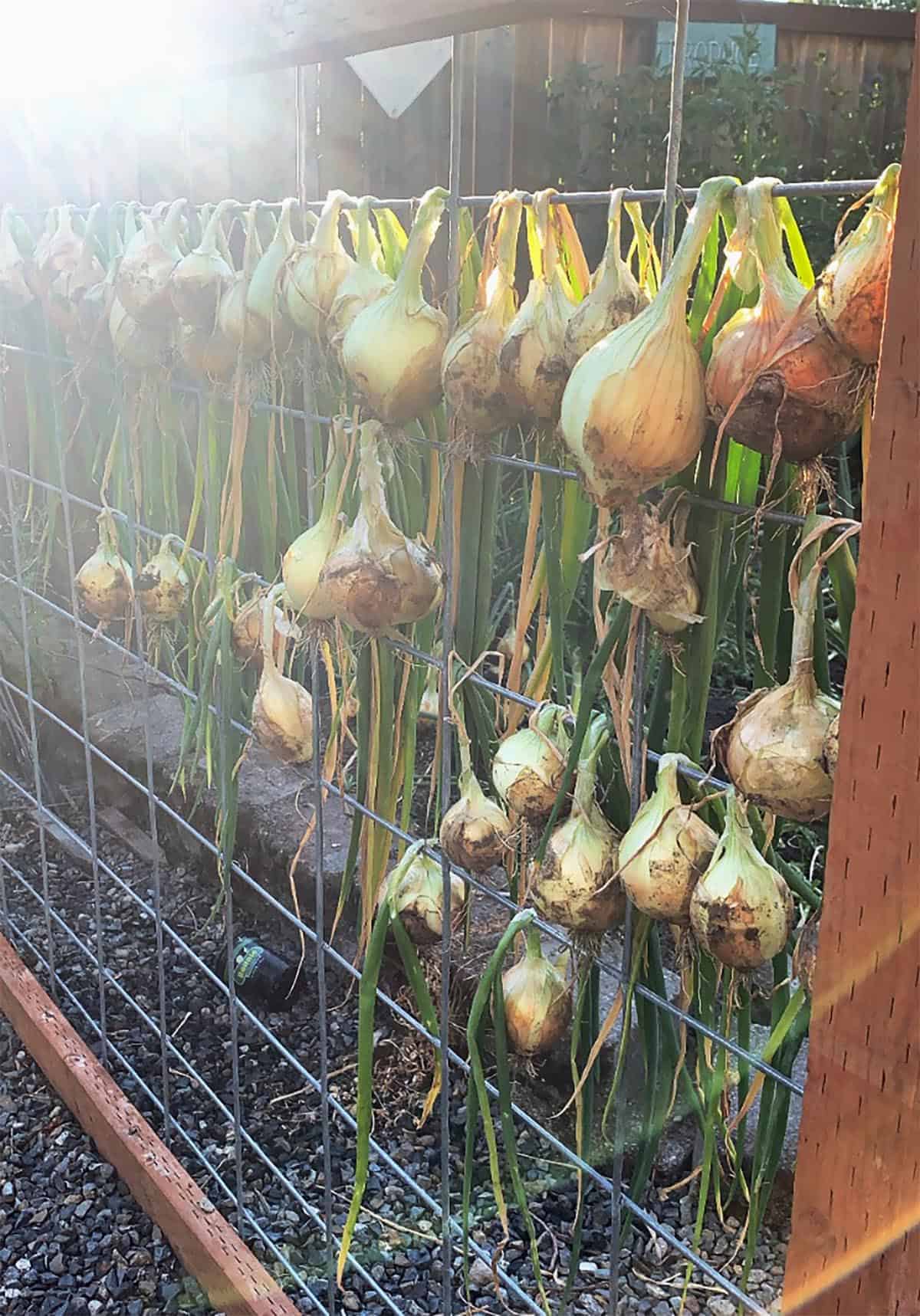
One of my favorite things to grow in my backyard garden is onions! They are typically one of the first things to be planted and once harvested and cured they will last months in the garage.
Onion plants are unique because you can harvest at just about any time during the growing season. For most produce you have to wait until they are fully ripe to pick and enjoy.
Not onions. You can essentially harvest them at any time stage of development. Sure they will be smaller, but they still pack a ton of flavor.
From experience, I can say that onions will grow just about anywhere. While it is not recommended or ideal for maximum growth, I have grown successful onions in the worst of conditions.
Onions are hardy, easy to grow, and require minimal additional care. And they just look stunning.
Jump to:
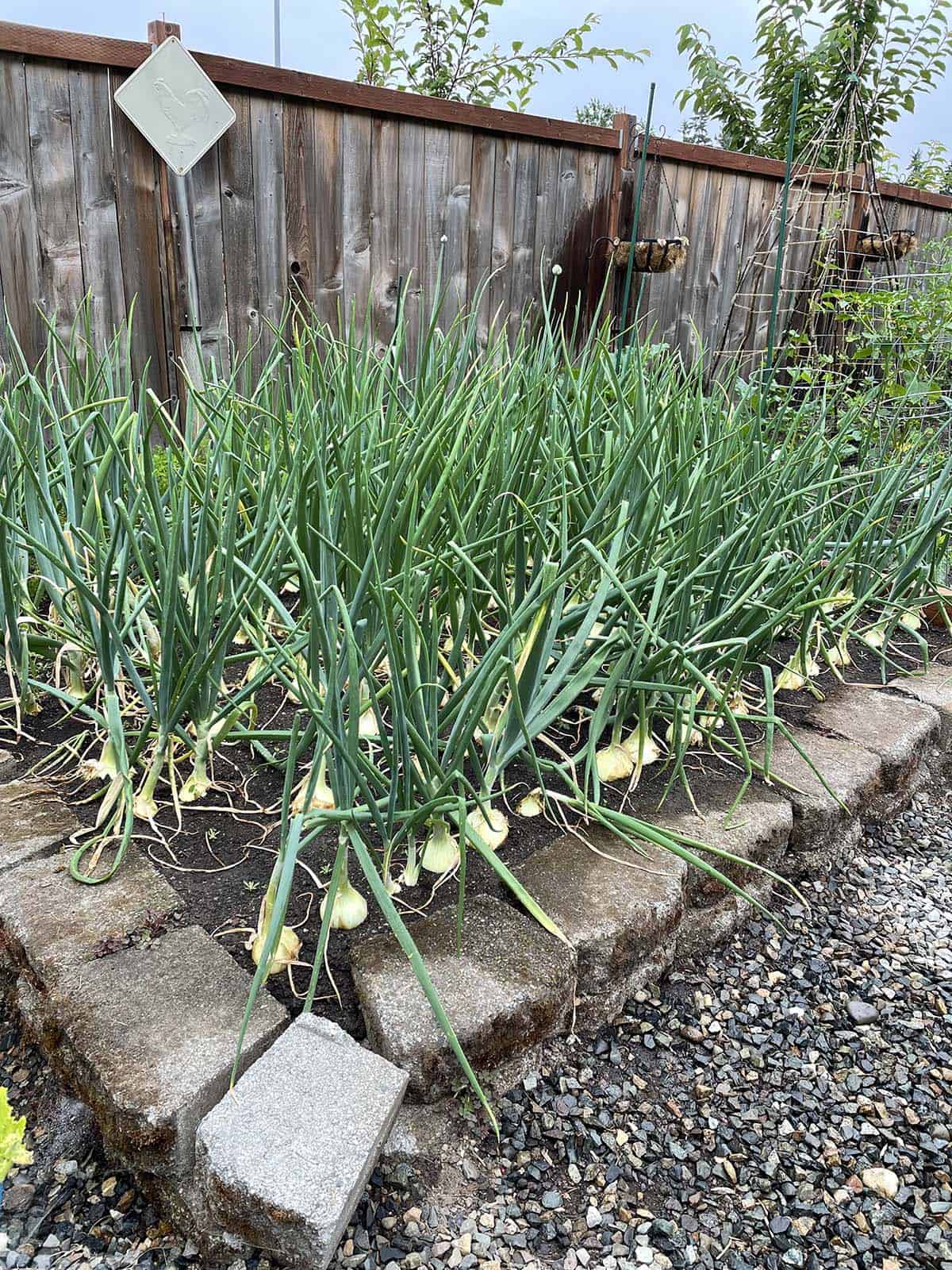
Cooking with Onions
Before we talk about what kinds of onions to plant, the first thing you will want to decide is what you are going to use most.
Yellow, sweet, white, red, scallions, shallots, or pearls. Determining which onion varieties you use the most will help pick the right ones to plant.
When deciding what onions to grow, first determine what you would use the most in your cooking. I tend to cook with more reds in the summer. They go great on the grill and in salads.
But in the long run, I tend to use more sweet and yellows. I am a Washingtonian so Walla Walla sweet onions are a must. These are the three I use the most in my dishes, so it's what goes in the garden.
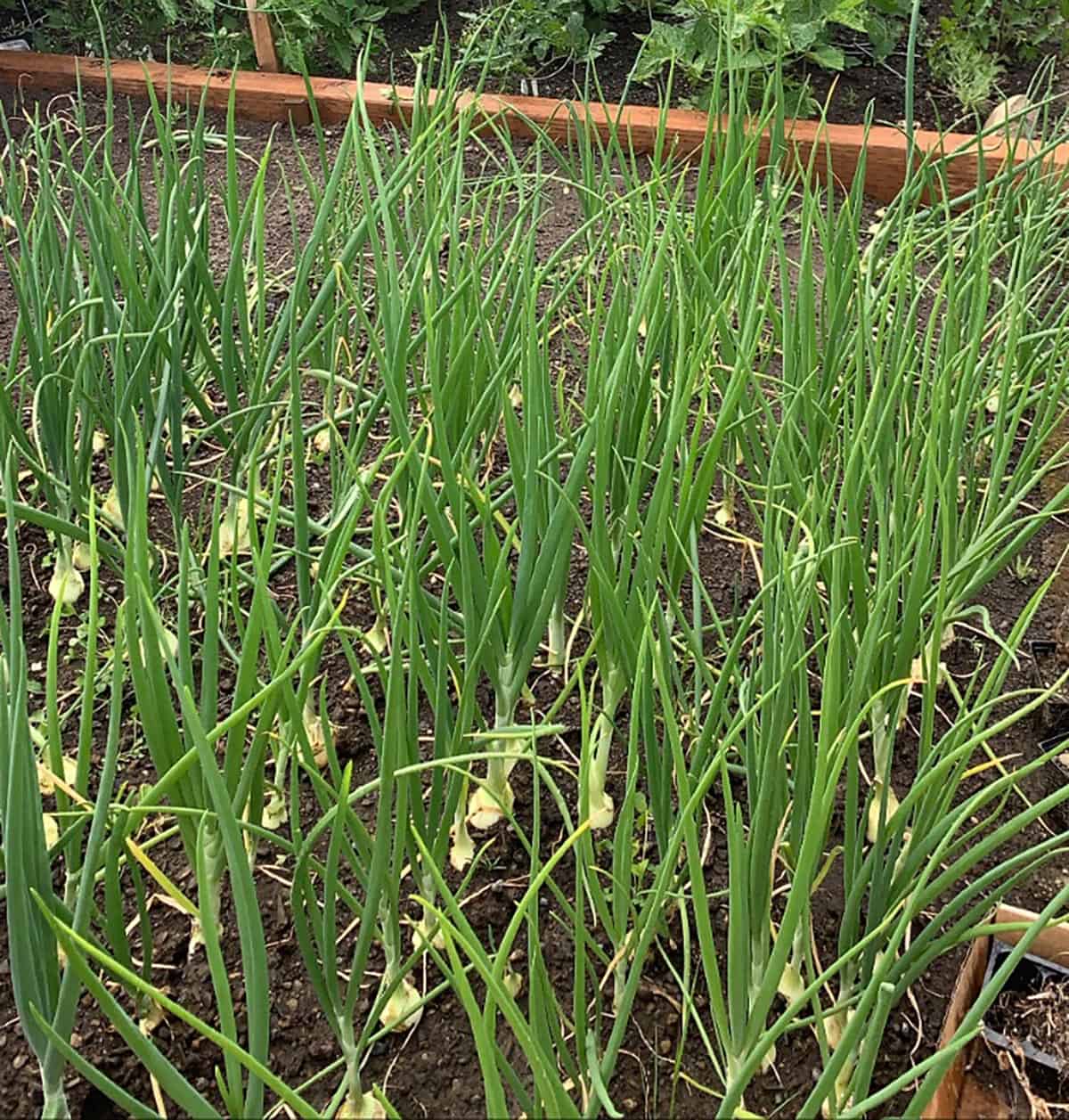
Types of Onions for Planting
When it comes to growing onions there are three different types to keep in mind: Short day, Long Day, and Neutral Day.
Deciding which ones to grow depends on where you are located and how many hours of sunlight there are in the summer.
Short-Day Onions - Southern Region, with 10-12 hours of summer daylight.
Long-Day Onions - Northern Region, with 14-16 hours of summer daylight.
Neutral-Day Onions - Central Region, with 12-14 hours of summer daylight.
If you are purchasing your onions from a local garden center you really don't have to worry about day length. They should have the right onions to grow in your area.
If you are ordering your onions from a seed company such as True Leaf Market, be mindful of your day length to make sure you are getting the proper seeds for your region.
Sets, Seeds, and Seedlings
There are three different options for getting your onion garden going. Onions are grown from sets, seeds, or seedlings (transplants).
Choosing which to use is a personal choice. If you are just starting out I recommend transplanting seedlings. They are inexpensive and have a shorter growing season than seeds.
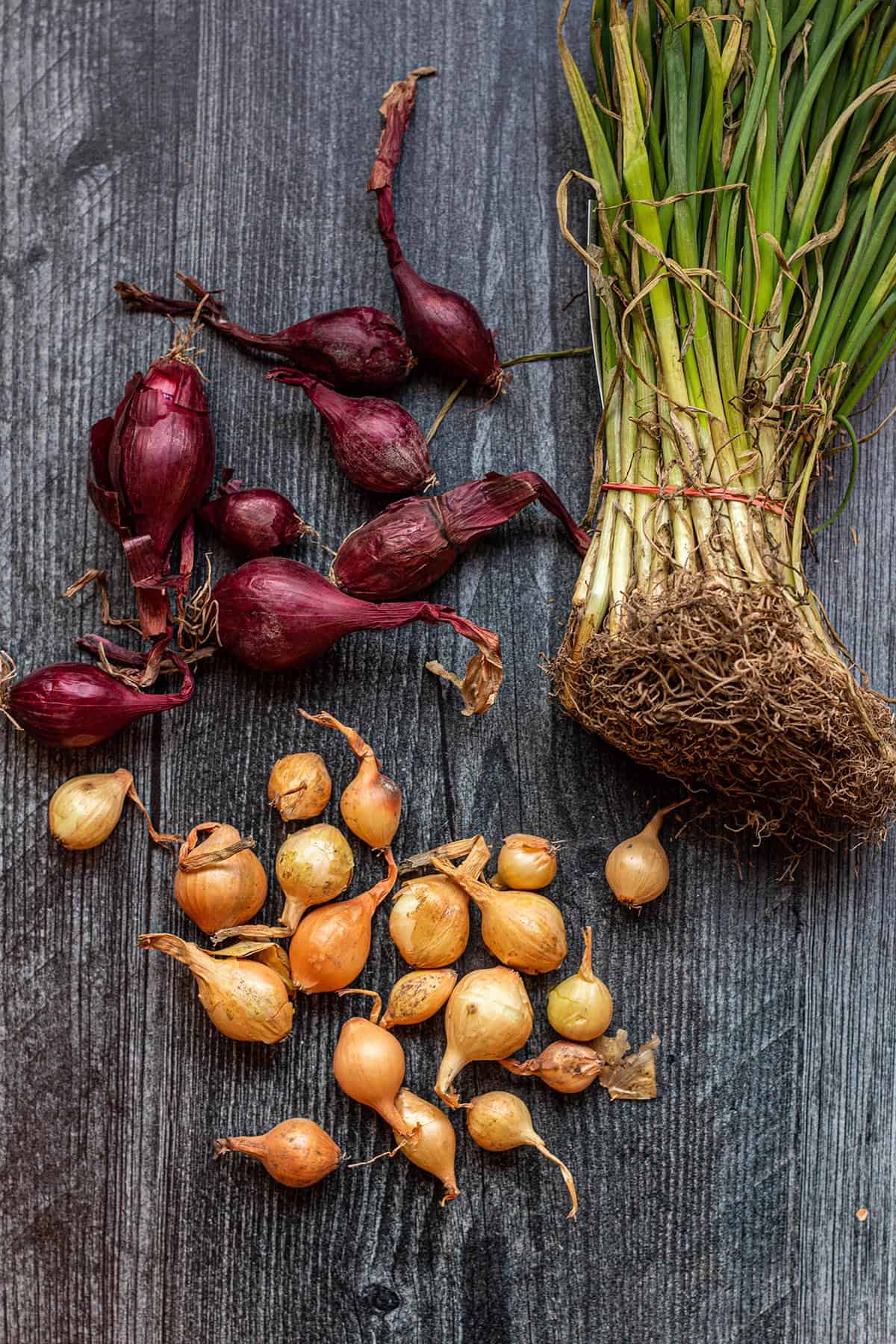
Seeds
Planting onions from seeds is the more economical approach but it can also take a lot more time. Growing from seeds is always the best option if you have the time and space for it but it's not always ideal.
Seeds also help ensure success. Transplanting sets or seedlings may not be as successful or produce the biggest bulbs. Seeds will always give you the biggest onions.
The downside to planting onion seeds is they do take a lot more time. If you have the ability to start from seeds this is the preferred method, but sets and transplants are also a great way to get started.
Sets
Onion sets look like small onion bulbs. They are really easy to transplant and establish very quickly.
The downside to sets is they are more prone to bolting. Because they have a more rapid rate of growth they tend to bolt and flower a lot faster than seeds or seedlings. Learn more about what bolting is and how to prevent it.
Onions that have bolted should be harvested and used right away. They will not keep long.
Onion sets are in their second year of growth. They are started in the fall, hardened off, and stored over winter. Once planted they reestablish a root system and take off.
Sets are very successful but may not get as large as those started from seeds.
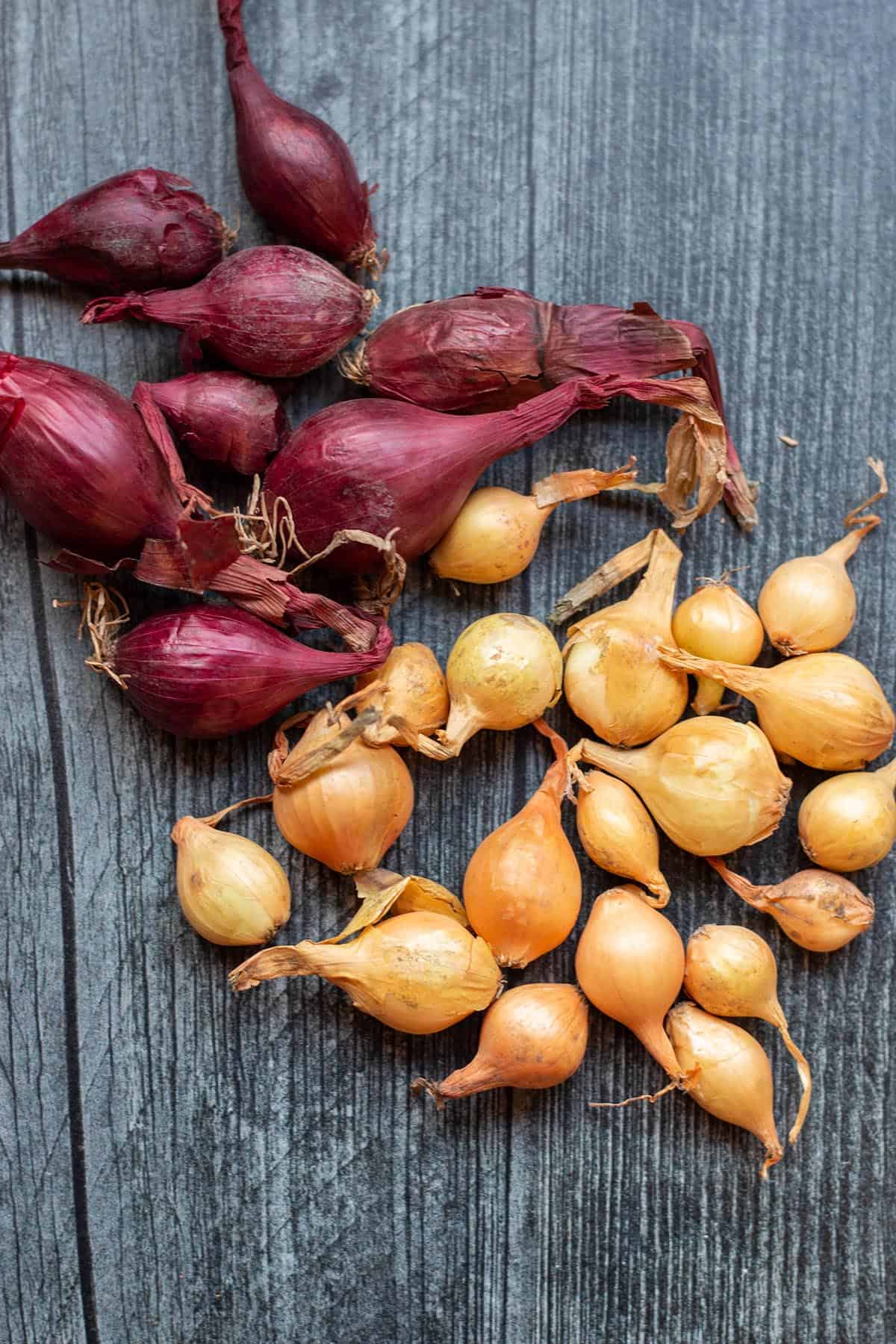
Seedlings or Onion Transplants
Seedlings are onions that were started in the current growing season and are ready to be transplanted outside.
They can often be found in large bundles at feed stores or nurseries.
Seedling transplants are my preferred method for starting onions. They are inexpensive and easy to plant.
I also do not have to worry about starting onion seeds. Since they are already in their growing season they establish and take off quickly. Onion seedlings are not as prone to bolting as sets are. I do not recall any of my seedlings ever bolting.
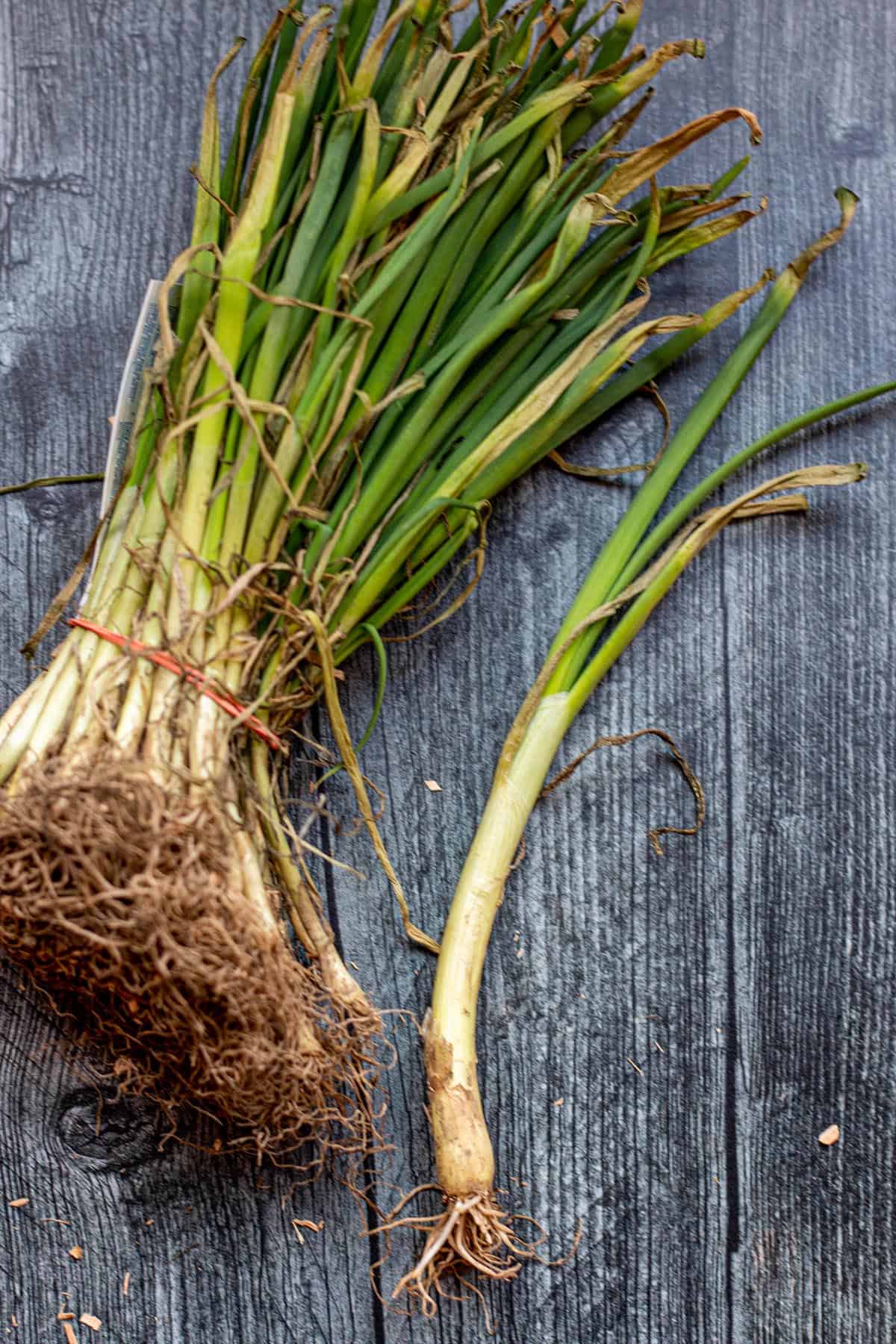
What Do Onions Need to Grow
While onions are really easy to grow there are a few things they will need to get the best results and give you nice large bulbs.
Sun
Onions need a spot that gets full sun with well-drained soil.
Onions do need a lot of sun to thrive. Six hours of daylight or more is ideal.
When selecting a location make sure it is a sunny spot free from shadows off of buildings or other plants and has good air circulation.
Soil
The soil needs to have good drainage and be loose. If the dirt is too compact, the onions will have a very hard time growing. And if it does not drain well, the standing water will cause the bulbs to rot.
Keeping up with weeds is also crucial. They can take a lot of the water and nutrients onions need to thrive.
To get the biggest bulbs out of your onions make sure to mix in aged compost in the fall or spring prior to planting. You can also use organic matter such as a bone meal.
Additional feedings of nitrogen-rich fertilizer weekly is recommended to achieve larger bulbs. Stop feeding once the onion emerges from the soil.
Water
Onions have a shallow root system, so ensure they are getting plenty of water.
They should be watered regularly, but not so much that they are sitting in soggy soil. Having well-drained soil is so crucial.
How to Plant Onions
Onions are hardy plants and can withstand cold temperatures. In zone 8b I can plant my onion seedlings in early spring and by mid-summer, they are fully mature and ready to harvest.
Seeds can be started in the fall before the last frost date. Just be sure that they have a few weeks of cooler weather to establish before the extreme cold rolls in. They will then go dormant until springtime.
Onion seeds, sets, and seedlings will all come with instructions on how to plant but here is a general guideline.
Planting Onion Seeds
Onion seeds need to be started indoors 6-8 weeks before they can be transplanted outside.
Follow the instructions on the seed packet to sow onion seeds. Once mature enough to plant outside follow the transplant guide for seedlings.
Planting Onion Sets
Plant sets in a trench that is around 1" deep and space 4-5" apart. Rows should be around 12" apart.
Place the small bulbs with the point end up and cover it with dirt. Make sure to not plant too deep. The tops of the sets should be just under the soil surface.
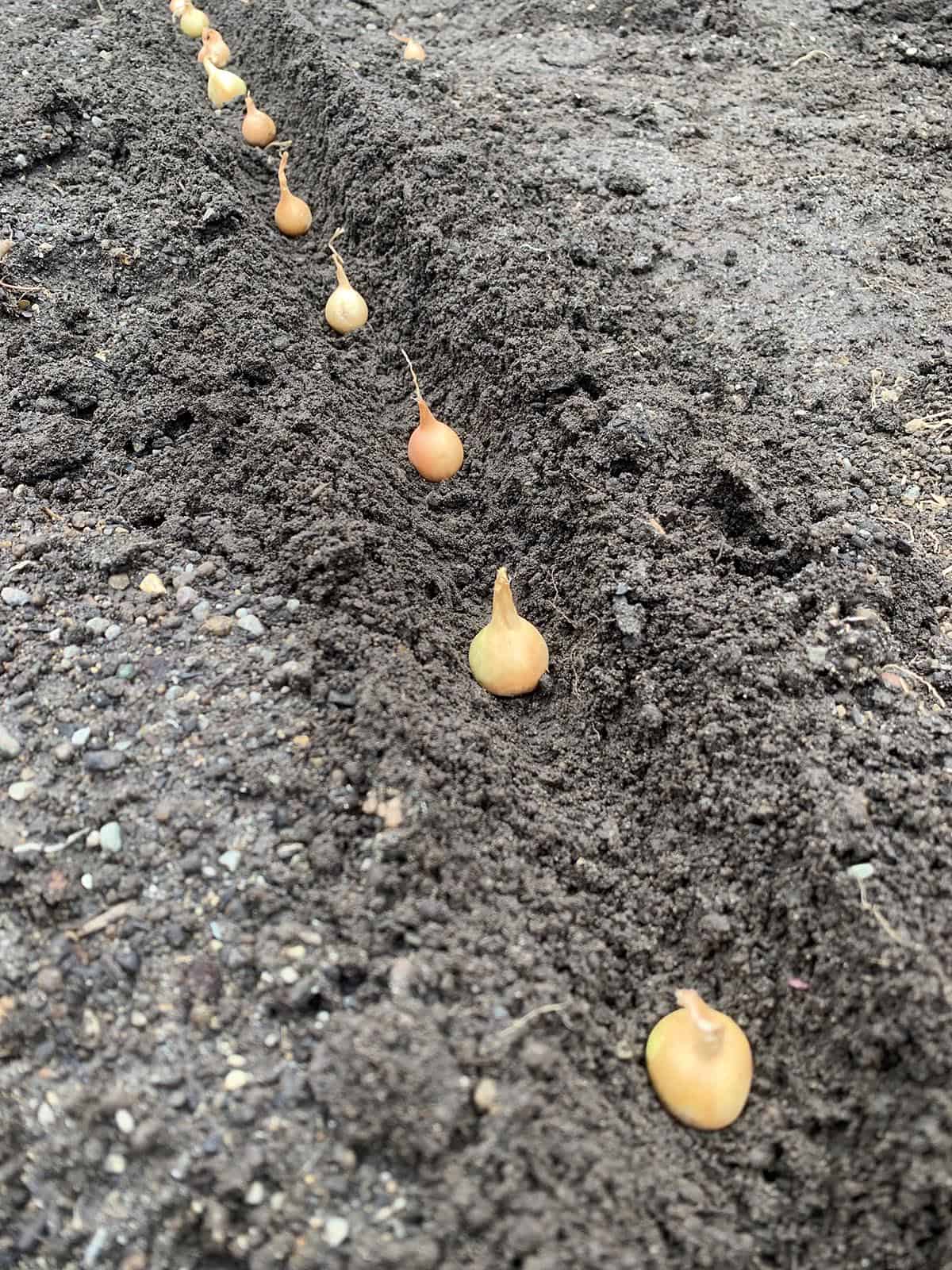
Planting Onion Seedlings (Transplants)
Seedlings are onions that were started in the current growing season and ready to be transplanted outside.
They are often purchased in bundles and look like green onions.
Plant each seedling 4-5" apart with rows 12" apart.
You can also plant seedlings closer together (1-2") and thin them out to enjoy smaller onions throughout the season.
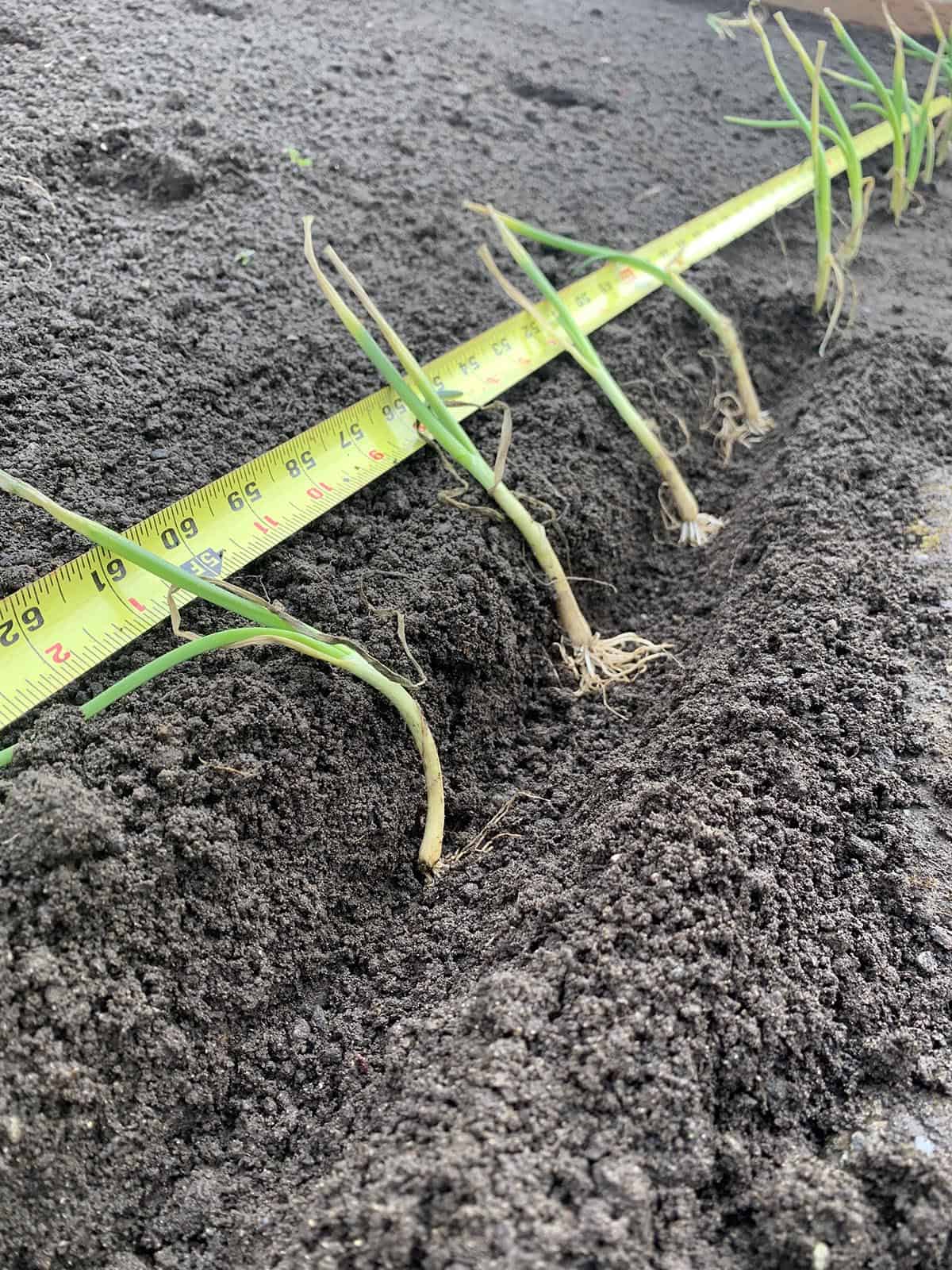
Another method is to poke a hole with either your finger or stick about 1-2" deep, drop the seedling in, and fill it with dirt.
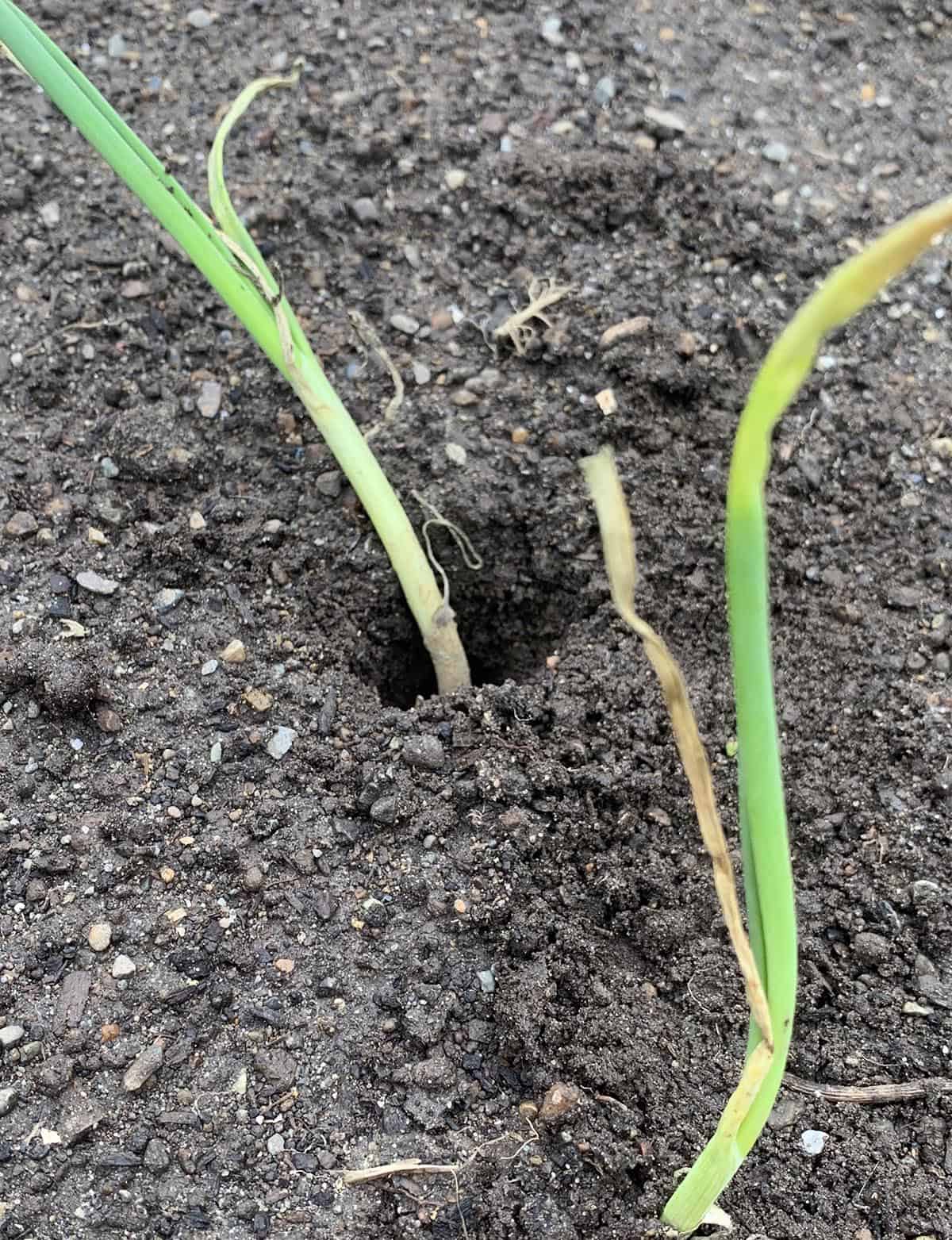
It is also recommended that once the bulbs start to develop to add a layer of mulch on top. This will help with water retention and keep weeds from growing.
When the onions start to push out of the ground do not cover them with more dirt and stop all supplemental feedings.
This is what onions need to do so don't worry if they all start poking out of the ground.
How to Harvest
As onions grow the onion tops will start to stick out of the ground and will form tall green stalks. Onions are typically done growing well before late summer.
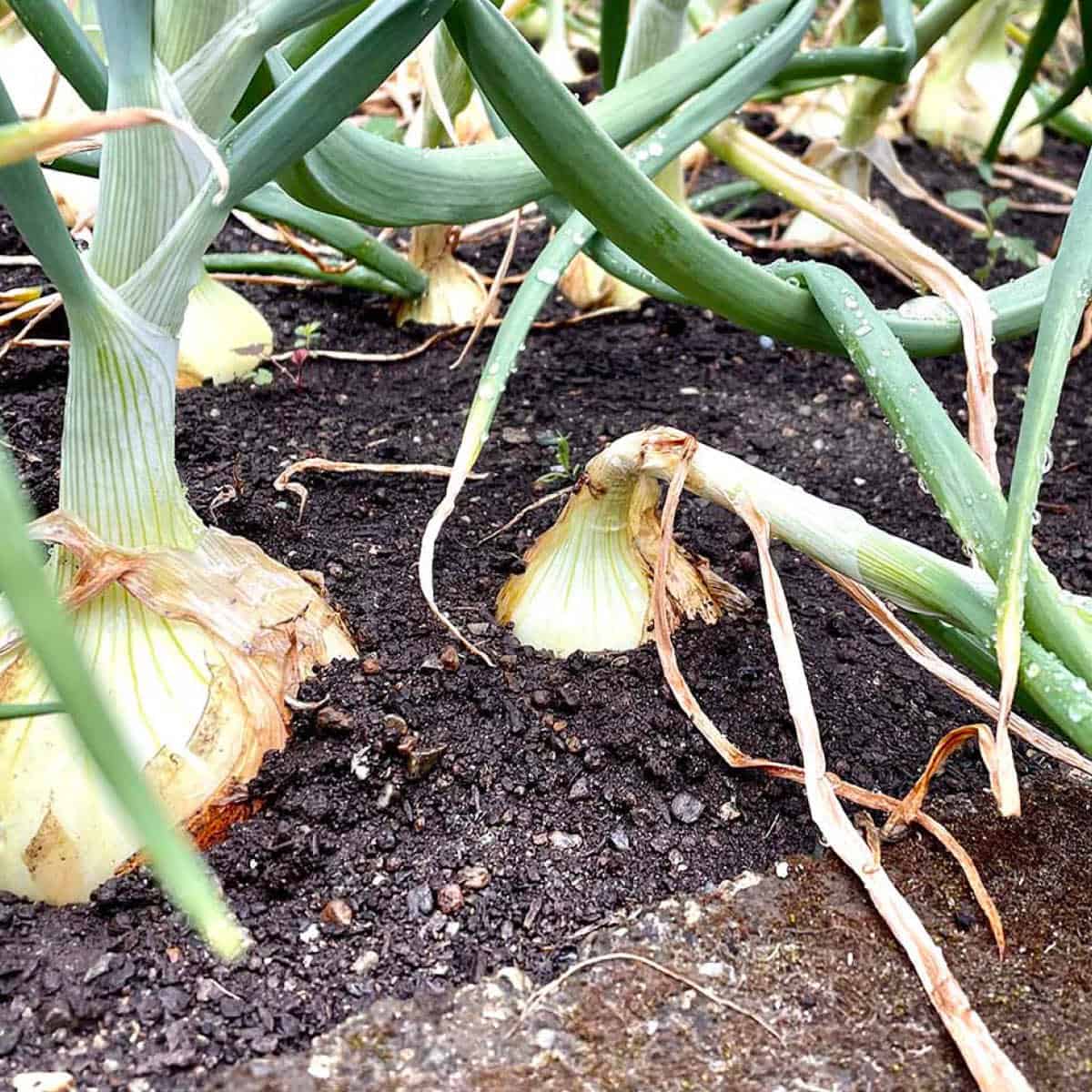
While you can pick onions at any time during the growing season, they will also tell you when they have reached maturity. Learn more about when to harvest onions.
Even the seedlings can be harvested in early summer and used as green onions.
At the end of the growing season, the tall green onion stalks will start to turn yellow and fall over.
Once all the leaves have completely fallen over (sometimes they need a little help by pushing them over) allow your onions to sit for a few more days in the ground to start the curing process.
If an onion starts to form a flower stalk and bolt, pull immediately and use it right away. These will not store as long. Learn more about bolting. The flower head will be full of seeds. These can be saved for future planting.
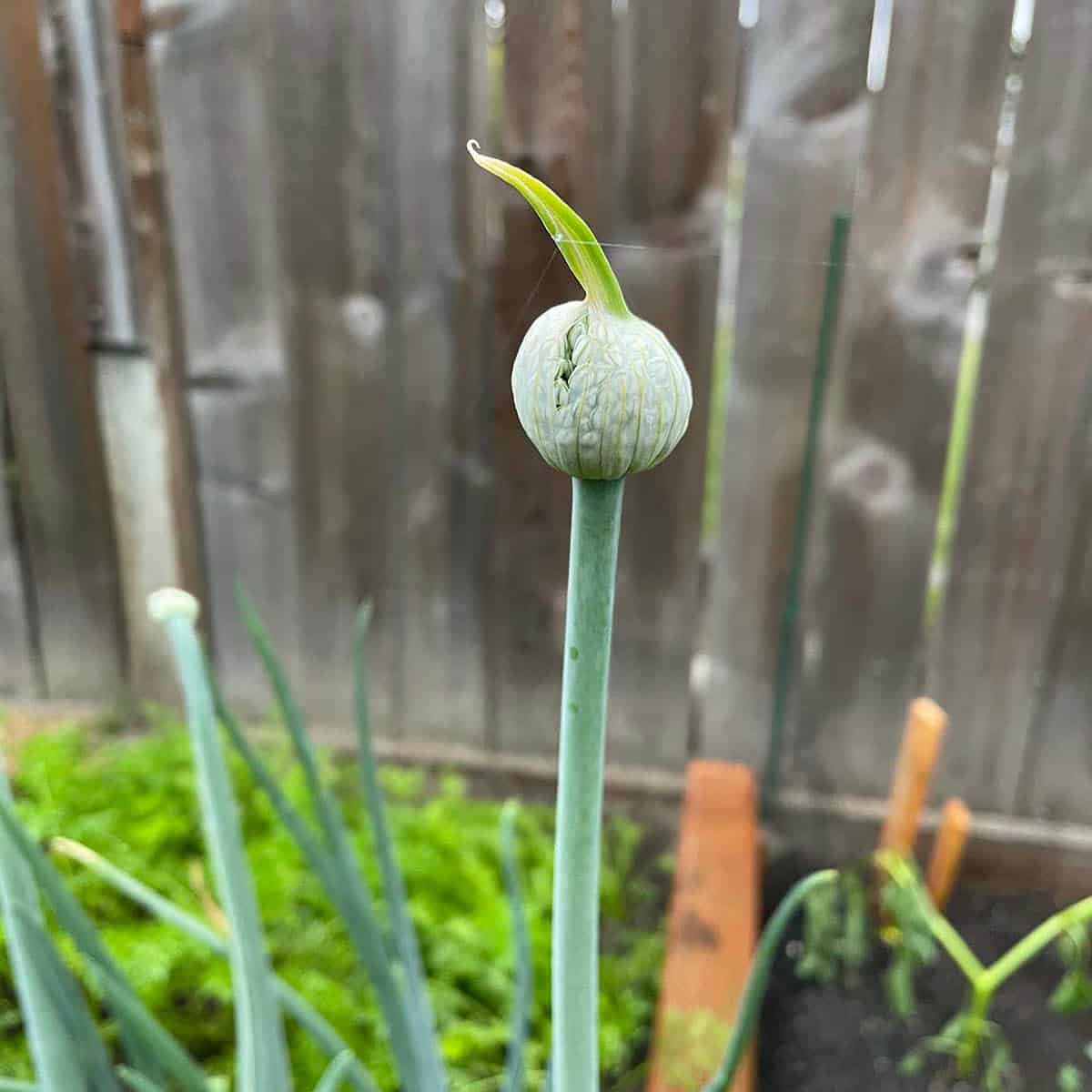
Using a small shovel gently loosen the soil and dig out your onions, shake off the dirt and hang (or layout) to cure.
Some gardeners will even just pull them and leave them in the garden beds to finish curing. Just make sure rain won't be an issue.
Cure and Storage
Once your onions are pulled it's time to cure and store. This means they need to completely dry out. Any remaining moisture will cause your onions to go bad.
Harvest onions on a day with dry weather so there is no extra moisture in the stalks.
You can leave onions in a warm, dry spot for a few days to allow for this to take place. I like to hang mine on the garden fence as long as it isn't raining.
Once the leaves (or neck) around the onion start to shrivel and the outer skins of the bulb are dry they are done and ready for storage.
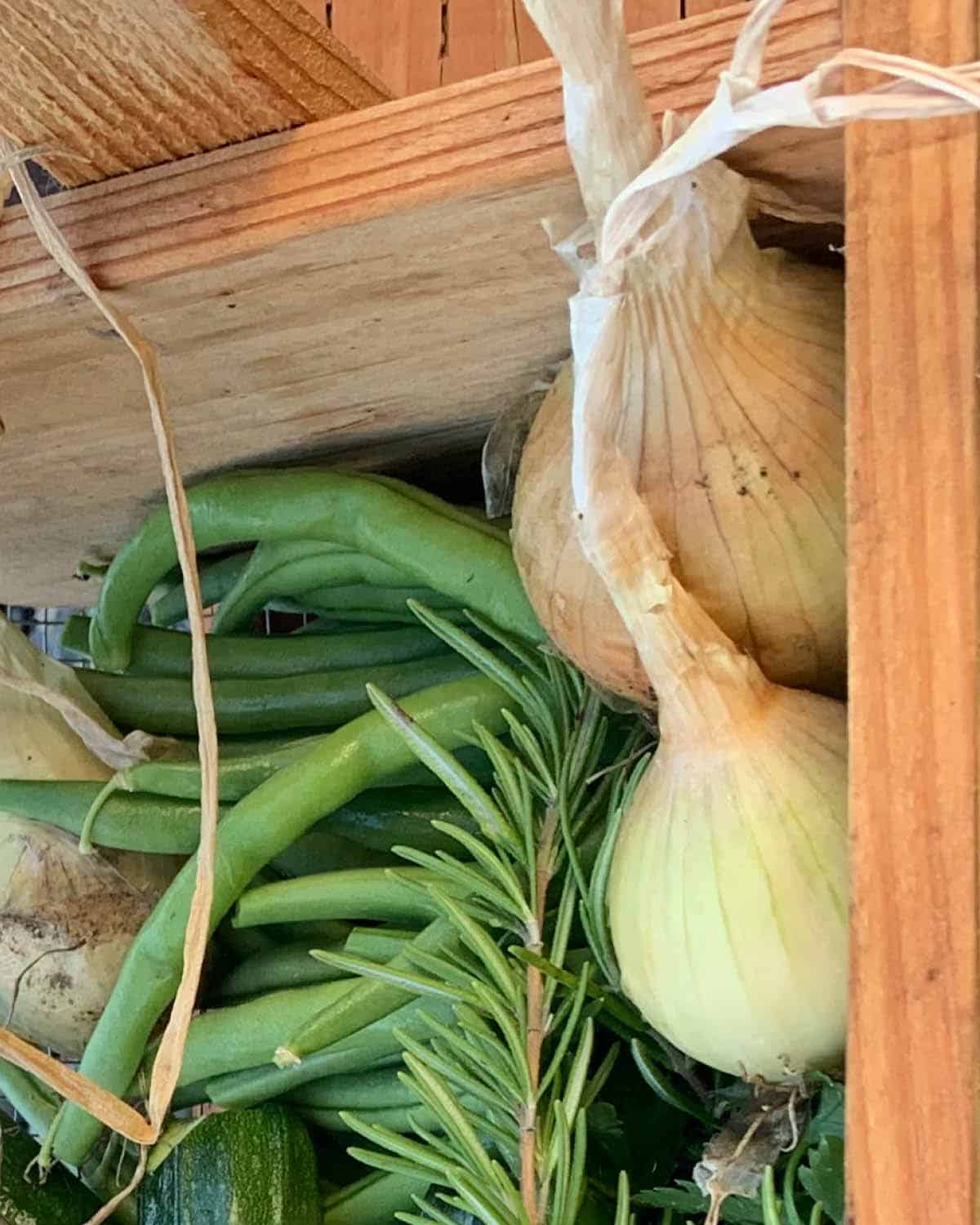
When done properly onions will last for months in a dry place. Make sure they have good air circulation so they don't build up moisture.
A great way to store them is to braid the dried-out stalks and hang them or keep in a mesh bag, just like the ones you purchase your onions in at the store.
Avoid a cardboard box as this will prevent airflow and cause them to mold.
Keep an eye on your onions and inspect for any that may be rotting or sprouting and remove right away.
Recipes and Cooking
Onions complement many recipes and are a staple in just about every cuisine. Use them to flavor a soup, taco, or eat alongside a steamed salmon. Or let the onion be the start of the show with this Classic French Onion Soup. Onions are a staple in every home cooks' pantry.
Are you ready to take on your own onion garden! Leave me a comment below telling me what ones you are the most excited to grow. For me, it's all about the Sweet Walla Wallas.
Other Gardening Resources:
You must use the category name, not a URL, in the category field.

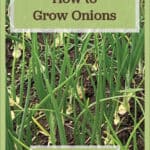
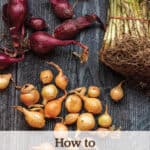
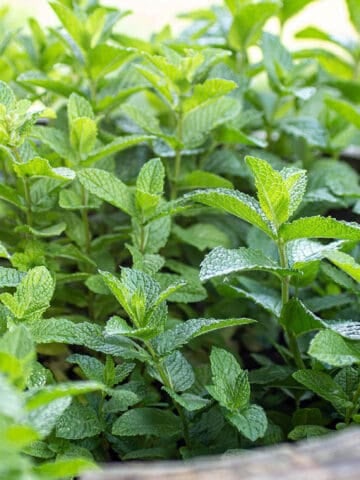
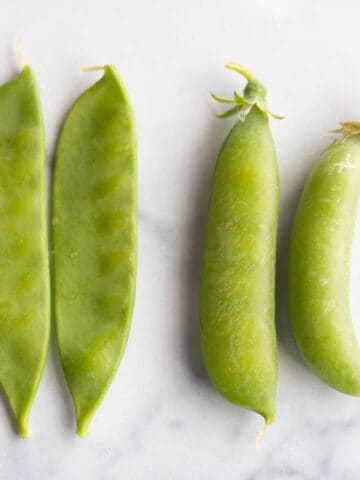
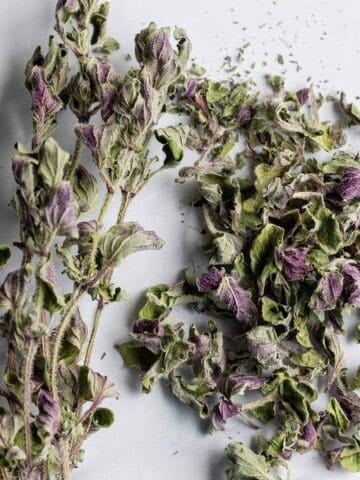
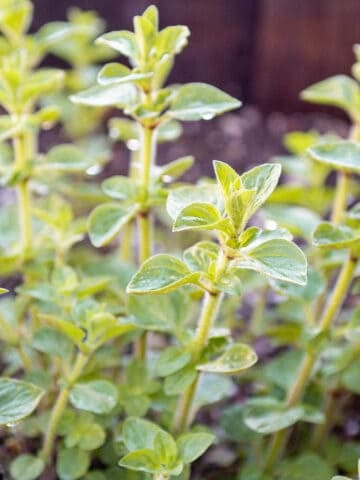
This is great! I just started my onions from seeds. Now, I can follow your advice to see them grow. Thank you!
Thats so exciting! I think I might attempt seeds next season. I have always done sets or starts but really want to get my own going as well.
Such great information! I will save this for my future garden. I think onions might be the one item I can actually grow.
Onions are a great thing to get started with! I hope this is helpful in getting you going.
I would love to grow onions! I'll be back when I get up the energy to actually commit!
I didn't even know onions had seeds! I thought they only grew from bulbs. Great post! I will definitely be coming back here.
That's how I have always grown them as well. They are just to easy from bulb or transplant.
Thank you for this post, it is so helpful! This is our first year growing onions and we are attempting from seed. We will see how they go!
Keep me posted and good luck! Fresh, homegrown onions are the best.
Wow the picture of your onion bed is inspiring! Im gonna pin this for reference because my onions never seem to do well. The actual bulbs never really seem to grow lol
Thank you so much. My bulbs struggled last year so I completely understand this.
I have been struggling with growing onions, thank you for the tips!
You are welcome! I hope they do better this year.